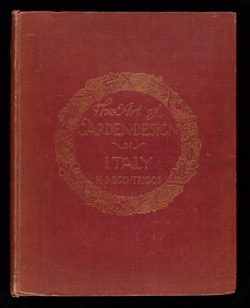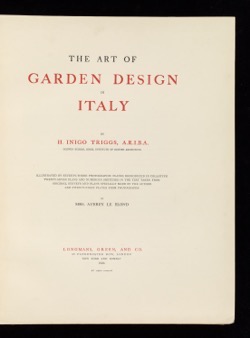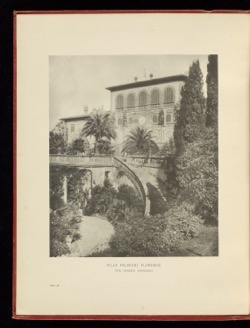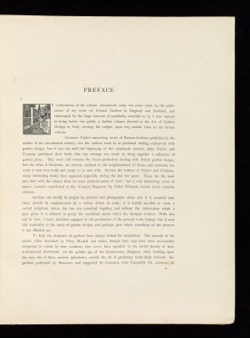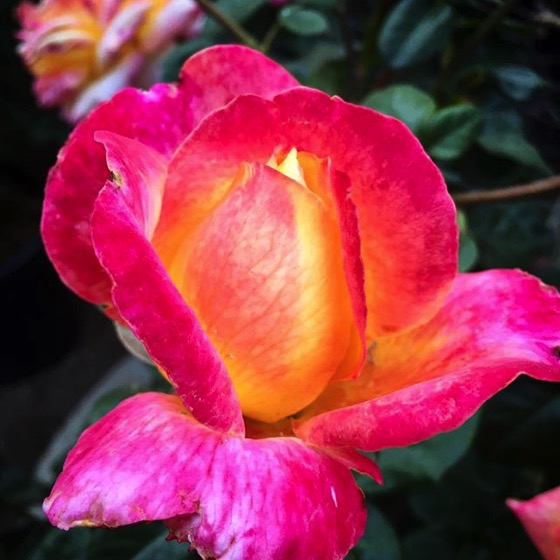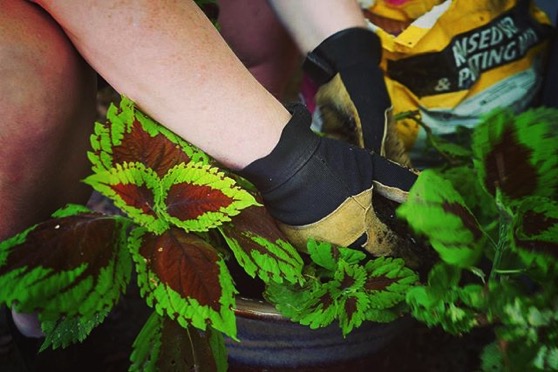Archive.org has a host of old gardening books (from mid-19th to mid-20th Century) available in many formats and on a host of topics. I happened across a few in my Pinterest feed and gone completely down the rabbit hole in this treasure trove of information. Sure some ideas might be out of
Download in Text, PDF, Single Page JPG, TORRENT from Archive.org
PREFACE
IN continuation of the scheme commenced some few years since by the publication of my work on Formal Gardens in England and Scotland, and encouraged by the large measure of popularity accorded to it, I now venture to bring before the public a further volume devoted to the Art of Garden Design in Italy, treating the subject upon very similar lines to my former volume. Giovanni Falda’s interesting series of Roman Gardens, published in the middle of the seventeenth century, was the earliest work to be produced dealing exclusively with garden design, but it was not until the beginning of the nineteenth century, when Percier and Fontaine published their book, that any attempt was made to bring together a collection of garden plans. This work still remains the finest production dealing with Italian garden design, but the villas it illustrates are entirely confined to the neighbourhood of Rome, and moreover the work is now very costly and rarely to be met with. Besides the volume of Percier and Fontaine, many interesting books have appeared, especially during the last few years. These for the most part deal with the subject from its more pictorial point of view; but a very interesting series of papers, recently contributed to the ‘ Century Magazine ’ by Edith Wharton, contain much valuable criticism.
Gardens can hardly be judged by pictures and photographs alone, and it is essential that these should be supplemented by a survey drawn to scale; it is hardly possible to form a correct judgment unless the two are consulted together, and without the information which a plan gives it is difficult to grasp the conditions under which the designer worked. With this end in view, I have, therefore, engaged in the production of the present work, hoping that it may add materially to the study of garden design, and, perhaps, give others something of the pleasure it has afforded me.
To Italy the designers of gardens have always looked for inspiration. The marvels of the classic villas described by Pliny, Martial and others, though they may have been occasionally surpassed in extent by later creations, have never been equalled in the lavish beauty of their architectural adornment. In the golden age of the Renaissance, designers, often building upon the very site of these ancient splendours, carried the art of gardenage many steps forward ; the gardens portrayed by Boccaccio, and suggested by Crescenzi, were frequently the creations of the greatest artists—of men like Raphael, Bramante, Bernini, Vignola, and many others of the most artistic minds of the day. From Italy the best traditions of garden design were carried by Le N&tre to France and thence to England.
The Historical Introduction does not pretend to be more than a brief account necessary to give some idea of the gradual progress of garden design, and in the descriptions of the various plates the endeavour has been to keep strictly to the intention of the work, treating the subject in as practical a manner as possible, and giving only such historical details as appear essential.
To Mrs. Aubrey Le Blond very much is due for her untiring energy in bestowing upon the work the best of her photographic art. In this she has frequently been handicapped, for the points of view chosen for the pictures have often been selected more to show the general dis¬ position of the gardens than to obtain the most artistic result. But, notwithstanding this, she has succeeded in producing a series of pictures that do justice to the subjects in a way no other medium could so well have accomplished.
My cordial thanks are due to Her Majesty Queen Margherita, for the interest and encouragement given to the work, and to all those owners who have so generously granted per¬ mission to measure and photograph their gardens, and who in several cases have put plans of their estates at my disposal. To Baron H. von Geymiiller, Professor Lanciani, Signor Luca Beltrami, Mr. Marion Crawford and Miss Janet Ross for very many valuable hints and suggestions in the selection of examples for illustration, and to Mr. J. Davidson and Mr. A. R. H. Jackson for assistance in preparing some of the plates.
H. INIGO TRIGGS.
8 South Parade, Bedford Park, London, W. January , 1906.
More information on this book:
* A portion of each sale from Amazon.com directly supports our blogs
** Many of these books may be available from your local library. Check it out!
† Available from the LA Public Library
